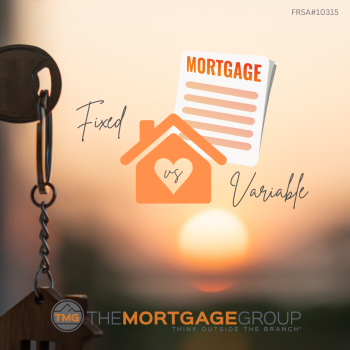Understanding Fixed and Variable Mortgage Rates: What’s Right for You in Today’s Market?
  

When it comes to choosing a mortgage, one of the most important decisions to consider is deciding between a fixed-rate and a variable-rate mortgage. Both options have their benefits, but the best choice depends on your financial goals, tolerance for risk, and the current economic climate. Let’s break it down:
Fixed-Rate Mortgages
A fixed-rate mortgage locks in your interest rate for the duration of your term, usually 1 to 5 years.
Benefits:
Predictability: Your monthly payments stay the same, which makes budgeting easier.
Stability: You’re protected from interest rate hikes, providing peace of mind.
Ideal for Long-Term Planning: If you plan to stay in your home for a while or prefer financial consistency, this option is great for you.
Drawbacks:
Fixed rates are often higher than variable rates at the start of the term. You might miss out on savings if rates drop during your term.
Variable-Rate Mortgages
Variable-rate mortgages, on the other hand, have an interest rate that fluctuates with changes to your lender's prime rate.
Benefits:
Lower Initial Rates: Historically, variable rates tend to be lower than fixed rates.
Potential Savings: If interest rates decrease, you benefit from lower monthly payments.
Flexibility: Variable-rate mortgages often have lower penalties if you choose to break your term early.
Drawbacks:
Payments can increase if interest rates rise, leading to unpredictability. Not ideal for those who prefer financial stability or have a tight budget.
Let’s Talk About Your Goals
Every borrower’s situation is unique. Whether you’re a first-time homebuyer or looking to refinance, I’d love to discuss your options and help you choose the best mortgage strategy for your needs.
Feel free to reach out for a personalized consultation—I’m here to help you make informed decisions with confidence.
|